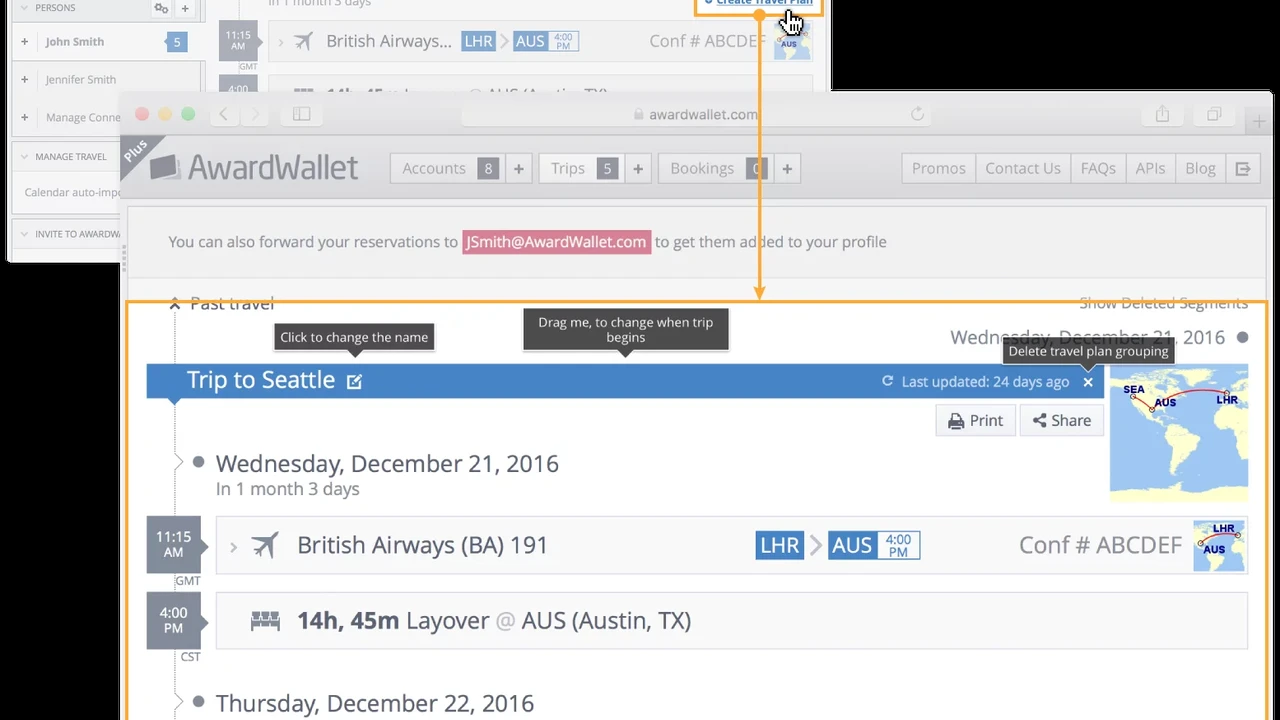0 APR Credit Cards Best for Balance Transfers
Explore the best 0 APR credit cards for balance transfers to save on interest and pay off debt faster.

0 APR Credit Cards Best for Balance Transfers
Understanding 0 APR Credit Cards and Balance Transfers
Hey there! Let's talk about something super useful if you're juggling credit card debt: 0 APR credit cards, especially when it comes to balance transfers. You know that feeling when you look at your credit card statement and a big chunk of your payment goes straight to interest? It's frustrating, right? That's where 0 APR (Annual Percentage Rate) credit cards come in. Essentially, these cards offer an introductory period—usually between 6 and 21 months—where you won't be charged any interest on new purchases, balance transfers, or sometimes both. The '0 APR' part means exactly that: zero interest for a set amount of time. This can be a game-changer for your finances, giving you a much-needed breather from high-interest payments.
Now, let's zoom in on balance transfers. A balance transfer is when you move debt from one or more existing credit cards to a new credit card, often one with a lower or 0% introductory APR. Think of it like consolidating your debt into one place, but with the added bonus of not paying interest on that debt for a while. This strategy is incredibly powerful because it allows you to direct more of your monthly payment towards the principal balance of your debt, rather than just treading water by paying off interest. Imagine how much faster you could pay down your debt if every dollar you paid went directly to what you owe, instead of lining the credit card company's pockets with interest fees. It's a fantastic tool for debt management, but it's crucial to understand how it works and to use it wisely.
Why Consider a 0 APR Balance Transfer Card for Debt Management
So, why should you even bother with a 0 APR balance transfer card? The biggest, most obvious reason is to save money on interest. If you're currently paying 18%, 20%, or even 25% APR on your existing credit cards, that interest can really add up, making it feel like you're never making progress. A 0% APR period gives you a window of opportunity to attack your debt without that interest burden. This means more of your money goes directly to reducing your principal balance, helping you become debt-free faster.
Beyond just saving money, these cards offer a chance to simplify your finances. Instead of managing multiple credit card payments with different due dates and interest rates, you can consolidate everything onto one card. This makes it easier to track your payments and stay organized, reducing the chances of missing a payment and incurring late fees or further interest charges. Plus, successfully paying down a large balance during a 0% APR period can give your credit score a nice boost. As your credit utilization ratio (the amount of credit you're using compared to your total available credit) decreases, your score tends to improve. This is a win-win: you save money, simplify your life, and potentially improve your credit health.
However, it's not all sunshine and rainbows. There are a few things to keep in mind. Most balance transfer cards charge a balance transfer fee, typically 3% to 5% of the amount you transfer. While this might seem like an extra cost, it's often a small price to pay compared to the interest you'd save over several months. Also, it's super important to have a solid plan for paying off the transferred balance before the 0% APR period ends. If you don't, any remaining balance will start accruing interest at the card's regular, often high, APR. So, think of this as a sprint, not a marathon. You've got a limited time to make the most of that interest-free period.
Key Features to Look for in a Balance Transfer Card
When you're on the hunt for the perfect 0 APR balance transfer card, there are a few key features you'll want to prioritize. First and foremost, look at the length of the 0% APR introductory period. The longer, the better, especially if you have a substantial amount of debt to tackle. Periods can range from 6 months to 21 months, so aim for one that gives you enough time to realistically pay off your balance.
Next, consider the balance transfer fee. As mentioned, this is usually 3% to 5% of the transferred amount. While some rare cards offer no balance transfer fee, they often come with shorter 0% APR periods or other trade-offs. Do the math: calculate how much you'd save in interest versus the cost of the fee. Often, the savings far outweigh the fee.
Also, check the regular APR that kicks in after the introductory period. While your goal is to pay off the debt before this happens, life can be unpredictable. Knowing the post-introductory APR is important in case you don't manage to clear the balance in time. A lower regular APR is always preferable.
Don't forget about annual fees. Many excellent balance transfer cards come with no annual fee, which is a definite plus. Why pay for the privilege of having a card if you don't have to? Finally, look at any additional perks or rewards. While your primary goal is debt reduction, some cards might offer a small sign-up bonus or cash back on new purchases (after you've paid off your transferred balance, of course!). These can be nice extras, but don't let them distract you from the main objective: debt elimination.
Top 3 0 APR Balance Transfer Credit Cards for 2024
Alright, let's get to the good stuff! Based on current offerings and what most people are looking for, here are three fantastic 0 APR balance transfer credit cards that stand out in 2024. Remember, eligibility for these cards depends on your credit score, so generally, you'll need good to excellent credit (FICO score of 670 or higher) to qualify for the best terms.
1. Citi Simplicity Card Longest 0 APR Period
The Citi Simplicity Card is a real standout if you need a long runway to pay off your debt. It offers one of the longest 0% intro APR periods on balance transfers in the market: 21 months from the date of your first transfer. That's nearly two years of interest-free payments! This card is perfect for those with a larger balance who need ample time to chip away at it without the pressure of accruing interest. It also offers 0% intro APR on purchases for 12 months, which can be handy, but your focus should be on the balance transfer.
- Balance Transfer Fee: 3% of the amount transferred (minimum $5).
- Annual Fee: $0.
- Regular APR: 19.24% - 29.99% Variable, after the intro period.
- Why it's great: The incredibly long 0% APR period is its main selling point. No late fees and no penalty rate are also nice touches, offering a bit more flexibility if you accidentally miss a payment (though you should always aim to pay on time!).
- Best for: Individuals with significant credit card debt who need a long time to pay it off and want to avoid interest charges for as long as possible.
- Estimated Cost Example: If you transfer $5,000, the balance transfer fee would be $150 (3% of $5,000). Over 21 months, if you pay $238.10 per month, you'd pay off the $5,000 principal. Without the 0% APR, at an average 20% APR, you'd pay approximately $950 in interest over the same period, making the $150 fee a worthwhile investment.
2. Chase Freedom Unlimited Excellent for Rewards After Debt
While primarily known for its fantastic cash back rewards, the Chase Freedom Unlimited also offers a competitive 0% intro APR on balance transfers for 15 months from account opening. This makes it a great option if you want to tackle your debt interest-free for a solid period, but also want a card that will continue to provide value with rewards once your debt is paid off. It earns 1.5% cash back on all purchases, 5% on travel purchased through Chase Ultimate Rewards, and 3% on dining and drugstore purchases.
- Balance Transfer Fee: 3% of the amount transferred (minimum $5) for transfers made within 60 days of account opening, then 5% (minimum $5). So, act fast!
- Annual Fee: $0.
- Regular APR: 20.49% - 29.24% Variable, after the intro period.
- Why it's great: It combines a decent 0% APR balance transfer period with excellent ongoing cash back rewards. This means it's not just a debt-busting tool, but a valuable card to keep in your wallet long-term.
- Best for: Those who want to pay off debt interest-free for a good period and then transition to a card that offers strong rewards for everyday spending.
- Estimated Cost Example: Transferring $3,000 would incur a $90 balance transfer fee (3% of $3,000). If you pay $200 per month, you'd pay off the $3,000 in 15 months. The interest savings compared to a 20% APR card would be around $475, making the fee a good trade-off.
3. Discover it Balance Transfer Solid 0 APR and Great Customer Service
The Discover it Balance Transfer card is another strong contender, offering a 0% intro APR on balance transfers for 15 months and on purchases for 6 months. Discover is also renowned for its excellent customer service and unique rewards program. You'll earn 5% cash back on everyday purchases at different places each quarter (like gas stations, grocery stores, and Amazon.com) up to a quarterly maximum, and 1% cash back on all other purchases. Plus, Discover matches all the cash back you've earned at the end of your first year, automatically.
- Balance Transfer Fee: 3% of the amount transferred.
- Annual Fee: $0.
- Regular APR: 17.24% - 28.24% Variable, after the intro period.
- Why it's great: A solid 0% APR period for balance transfers, combined with a rewarding cash back program and Discover's highly-rated customer service. The cash back match in the first year is a fantastic bonus.
- Best for: Individuals looking for a good balance transfer offer with strong ongoing rewards and a company known for customer satisfaction.
- Estimated Cost Example: A $4,000 balance transfer would cost $120 in fees (3% of $4,000). Paying approximately $266.67 per month would clear the principal in 15 months. The interest saved compared to a 20% APR card would be around $630, making the fee a smart move.
How to Maximize Your 0 APR Balance Transfer Strategy
Getting a 0 APR balance transfer card is just the first step; the real magic happens when you use it strategically. Here's how to make the most of your interest-free period and truly conquer your debt:
Create a Detailed Repayment Plan and Stick to It
This is probably the most crucial step. Before you even apply for the card, calculate exactly how much you need to pay each month to clear your transferred balance before the 0% APR period expires. Divide your total transferred balance (plus the balance transfer fee) by the number of months in your introductory period. For example, if you transfer $5,000 and have a 15-month 0% APR period, you'll need to pay at least $333.33 per month ($5,000 / 15). Set up automatic payments for this amount to ensure you never miss a payment. Missing payments can not only incur late fees but also sometimes revoke your 0% APR offer, which you definitely don't want!
Avoid New Purchases on the Balance Transfer Card
This is a big one. While some 0 APR cards offer an introductory period on purchases as well, it's generally best practice to avoid making new purchases on your balance transfer card. Why? Because new purchases often have a different APR than the transferred balance, or they might start accruing interest immediately if you don't pay them off in full each month. The whole point of this strategy is to eliminate existing debt, not create new debt. If you need to make purchases, use a different credit card that you can pay off in full each month, or better yet, use a debit card or cash.
Understand the Balance Transfer Fee and Its Impact
As we discussed, most balance transfer cards come with a fee, typically 3% to 5% of the amount transferred. Factor this into your repayment plan. For instance, if you transfer $10,000 with a 3% fee, you're actually transferring $10,300. Make sure your monthly payments are calculated to pay off this total amount. While it's an upfront cost, remember that it's usually significantly less than the interest you'd pay on your old high-APR cards. Think of it as a small investment to save a lot of money.
Be Mindful of the Introductory Period End Date
Mark your calendar! Seriously, set a reminder a few months before your 0% APR period is set to expire. This gives you time to assess your progress. If you're on track to pay off the balance, fantastic! If it looks like you might have a small remaining balance, you can make an extra effort to pay it off before the higher regular APR kicks in. If you have a significant balance left, you might consider transferring it to another 0 APR card (if your credit score allows and you can find another good offer), but be careful not to get into a cycle of constantly transferring debt without addressing the root cause.
Monitor Your Credit Score Regularly
As you pay down your debt, your credit utilization ratio will decrease, which is great for your credit score. Keep an eye on your score using free services like Credit Karma or your credit card issuer's tools. A higher credit score can open doors to better financial products in the future, like lower interest rates on loans or even better credit card offers. It's a good way to see the tangible results of your hard work.
Potential Pitfalls and How to Avoid Them
While 0 APR balance transfer cards are powerful tools, they're not without their potential downsides. Being aware of these pitfalls can help you navigate the process successfully.
Falling into the Debt Trap Again
The biggest danger is using the newly freed-up credit on your old cards to rack up new debt. This is a classic mistake that can leave you in a worse financial position than when you started. The goal is to eliminate debt, not just move it around or create more. Once you transfer a balance, consider closing the old accounts (especially if they have annual fees) or at least cutting up the cards and putting them away to remove the temptation to spend.
Missing Payments or Paying Late
Missing a payment or paying late can have serious consequences. Many 0% APR offers state that the introductory rate can be revoked if you make a late payment. This means your interest rate could jump to the regular, higher APR immediately, negating all the benefits. Always pay at least the minimum amount on time, and ideally, pay your calculated amount to clear the debt within the intro period. Setting up automatic payments is your best defense against this.
Not Paying Off the Balance Before the Intro Period Ends
If you don't pay off the entire transferred balance before the 0% APR period expires, any remaining balance will start accruing interest at the card's standard variable APR, which can be quite high. This is why a solid repayment plan and sticking to it are so critical. Don't underestimate how quickly interest can accumulate once that 0% period is over.
Applying for Too Many Cards
While it might be tempting to apply for multiple balance transfer cards, especially if you have a lot of debt, each application results in a hard inquiry on your credit report, which can temporarily lower your credit score. Too many hard inquiries in a short period can make you look like a risky borrower. Focus on one or two cards that offer the best terms for your situation, and only apply when you're confident you'll be approved.
Not Reading the Fine Print
Credit card terms and conditions can be dense, but it's crucial to read them carefully. Pay attention to the balance transfer fee, the length of the 0% APR period for both purchases and balance transfers, the regular APR, and any clauses about what happens if you miss a payment. Understanding these details upfront can save you from unpleasant surprises down the road.
Alternative Strategies if a Balance Transfer Isn't Right for You
A 0 APR balance transfer card is a fantastic tool, but it's not for everyone. Maybe your credit score isn't quite high enough, or perhaps you have too much debt to realistically pay off within an introductory period. Don't worry, there are other strategies you can explore to tackle your debt.
Debt Consolidation Loans
A personal loan for debt consolidation can be a great alternative. With a debt consolidation loan, you take out a single loan with a fixed interest rate and use the funds to pay off all your existing high-interest debts. This leaves you with one monthly payment, often at a lower interest rate than your credit cards, and a clear end date for your debt. The interest rate you qualify for will depend on your creditworthiness, but even a slightly lower fixed rate can save you a lot of money compared to variable credit card APRs. Look for lenders like LightStream, SoFi, or Marcus by Goldman Sachs, which often offer competitive rates for borrowers with good credit.
Debt Management Plans DMP
If you're struggling to manage your debt and feel overwhelmed, a Debt Management Plan (DMP) through a non-profit credit counseling agency might be a good fit. In a DMP, the agency works with your creditors to negotiate lower interest rates, waive fees, and set up a single, affordable monthly payment. You make one payment to the agency, and they distribute it to your creditors. DMPs typically last 3 to 5 years and can be a lifeline for those who need structured help. While they can sometimes have a minor negative impact on your credit score initially, successfully completing a DMP can significantly improve your financial health.
Debt Snowball or Debt Avalanche Methods
These are DIY debt payoff strategies that don't require opening new credit lines. The debt snowball method involves paying off your smallest debt first, while making minimum payments on all others. Once the smallest debt is paid, you roll that payment amount into the next smallest debt, creating a 'snowball' effect. This method is great for motivation, as you get quick wins. The debt avalanche method, on the other hand, focuses on paying off the debt with the highest interest rate first, while making minimum payments on others. This method saves you the most money on interest in the long run. Choose the method that best suits your personality and financial goals.
Negotiating with Creditors Directly
Sometimes, simply calling your credit card companies can yield positive results. Explain your situation and ask if they can lower your interest rate, waive a late fee, or offer a temporary hardship plan. You might be surprised at how willing they are to work with you, especially if you've been a good customer in the past. They'd rather get some payment than no payment at all.
Final Thoughts on Using 0 APR Balance Transfer Cards
0 APR balance transfer credit cards are incredibly powerful tools for taking control of your credit card debt. They offer a unique opportunity to pause interest accrual, allowing you to make significant progress on your principal balance. By choosing the right card, creating a disciplined repayment plan, and avoiding common pitfalls, you can leverage these cards to save hundreds, if not thousands, of dollars in interest and accelerate your journey to becoming debt-free.
Remember, the key to success isn't just getting the card; it's about using it wisely and strategically. View the 0% APR period as a temporary window to fix your financial situation, not a license to spend more. With careful planning and commitment, a balance transfer card can be your best friend in the fight against high-interest debt, paving the way for a healthier financial future. Good luck, you've got this!
:max_bytes(150000):strip_icc()/277019-baked-pork-chops-with-cream-of-mushroom-soup-DDMFS-beauty-4x3-BG-7505-5762b731cf30447d9cbbbbbf387beafa.jpg)






